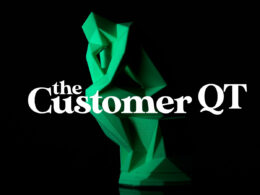The looming supply disruption from coronavirus offers historical opportunities for companies to build or destroy customer loyalty.
Consider the fate of two companies: Company A and Company B. Both companies are relatively successful, and both are faced with an extended supply disruption. Company A responds to the shortage by trying to maintain its traditional customer management processes with diminishing product availability. The vice president of sales is careful to be transparent, informing customers of its supply shortages, and assuring them that it is doing everything possible to secure increasingly scarce supplier allocations.
The company’s sales reps try to prioritize each of their customers. Soon the company is overwhelmed with conflicting priorities, with each sales rep trying to hold inventory for his or her customers, leading the company to adopt the default option — first-come first-served — as its response to the shortage. This is essentially no customer management strategy at all, and is a recipe for a long-lasting pool of customer ill-will.

Jonathan Byrnes
Company B, on the other hand, has a prioritized strategic plan for supply shortages which it developed as an essential part of its risk management process. When shortages materialize and increase, the whole management team becomes a crisis management steering committee, systematically and strategically guiding the company through the crisis.
The company emerges from the crisis period with profits preserved and customer loyalty increased. In fact, the management team used the supply disruption to build long-term customer loyalty, and with it, sustained profit growth and market positioning advantages.
Five Rules for Growing Customer Loyalty
Much is being written about how to manage the supply chain threat of coronavirus. The problem is that virtually all of this focuses on disruption threats to inbound supply chains from suppliers. The equally important, longer-lasting challenge is managing your customers through the crisis period to maximize their long-term loyalty and profitability.
If you get this right, the upside is enormous. If you get this wrong, you will suffer the consequences for years to come.
Five rules form the cornerstone of an effective customer management program in a time of supply disruption:
- Prioritize your customers by profitability
- Incorporate your emerging channel strategies
- Align sales compensation with your priorities
- Develop product substitution groups
- Prevent over-ordering
Together, these will ensure that your company will emerge from this difficult period in a much better position than when it commenced, hurtling past your scrambling competitors.
Prioritize Customers
The key to customer prioritization is profit segmentation: focusing your resources on accelerating relationships with your high-profit customers, while using the shortage of products to re-negotiate your relationships with your profit-draining customers.
Today’s supply chain disruptions from tariffs, viruses, and other factors offer an opportunity to lock in long-term gains with your most profitable customers, and to use the disruption as leverage to reverse your relationship with your large profit-draining customers. The key is to identify your profit peaks (large, high-profit customers), profit drains (large, money-losing customers), and profit deserts (small, no-profit customers) using profit mapping.

John Wass
The objective of profit mapping is to break apart the aggregated categories of revenue and cost in your company’s income statement. In the past, when markets were homogeneous, costs were relatively uniform. Companies sought to maximize their revenues from all customers in order to gain economies of scale. These aggregate categories were adequate to grow profits. Today’s businesses are profoundly different: markets are very fragmented, costs vary greatly depending on customer relationships and supply chain integration, and profitability varies hugely from customer to customer and product to product.
Today, the only way to understand the actual profitability of every nook and cranny of a company is to create an all-in P&L on every transaction (invoice line), and couple it with powerful data analytics that can combine these transaction P&Ls to show the profitability of every customer, product, and operational process. It is particularly important to avoid relying on common partial measures like gross margin. Gross margin does not align with net profits because factors like order pattern, delivery costs, and other operating costs are so important.
The prioritization below is based on profit segmentation. It is a particularly effective way to maximize your long-term benefits so your company exits this crisis in better shape both with respect to its profitability and its customer loyalty strategy.
Profit-peak customers. The single most important initiative a company can make is to give priority to its profit-peak customers. These critical customers warrant working aggressively to make products available, even if it costs more to support them. Also, this may be an opportunity to lock in longer-term contracts, if possible.
These customers may only represent 10% to 20% of your customers, but they provide the vast majority of your profits. Moreover, they generally are less price sensitive, loyal, and eager to try innovative products and services.
In all times — especially in difficult times — you should dedicate a set of multi-functional teams to these profit-peak customers, and not serve them through a general sales force. The dedicated team can focus on building extended contracts with supply chain integration and other operating ties that ensure steady, long-term profit growth for both your customers and for you.
Profit-draining customers. The second priority is counterintuitive. A time of supply shortage presents a perfect time to use the disruption as an opportunity to change the nature of your relationship with your large, profit-draining customers by approaching them with proposals to increase the profits they generate for you.
The wrong way to do this is to gouge them with large price increases, generating lasting bad feelings. It is much more effective to increase the profitability of their business by working with them to decrease your (and their) operating costs. In our experience, most profit-draining customers can be turned around through smart, targeted supply chain and category management measures that create joint efficiencies like increasing order size by reducing order frequency, developing proactive substitute product policies, and other similar measures.
This requires clarity of purpose but does not cost much, and has a huge permanent, positive impact on both companies. Doing this requires very capable multi-functional teams dedicated solely to this customer segment. If a profit-draining customer refuses to work with you, it makes sense to reduce your supply to it.
Profit-desert customers. The third priority is to carefully manage your profit-desert customers by understanding their potential and carefully curating their product availability. Importantly, some of these customers are large companies for whom you are a minor supplier. You may be able to award these customers with secure supply access in return for a contract for a bigger share of wallet. The objective is to convert these customers into large, profit-peak customers; digital marketing probes are particularly effective at this.
For example, profit-peak customers could be supplied at their historical demand; profit-drain customers at 75% to 80% of their historical demand; and profit-desert customers at 60% of their historical demand (unless they contract for a larger share of wallet).
Many other profit-desert customers, however, are simply small companies that do not have the ability to grow significantly. These customers typically generate the majority of your operating costs because they issue a large number of very small orders (it generally takes the same time and cost to pick an order line with a small number of items as it takes for an order line with a much larger number of items). This is where your cost reduction, or aggressive constraints on product availability, should be placed. This is also the time to enforce limits on free services that have been neglected (e.g. minimum order sizes for free shipping).
It is important, however, to be very transparent and to work with these customers to ease their difficulties as much as possible. For example, many customers may be willing to accept substitutes that are more readily available.
Incorporate Channel Strategies
The current era is characterized by the emergence of critical digital channels and omnichannel management. The digital giants are gaining prodigious market share in industry after industry through their web-based capabilities. Most companies are sprinting to catch up, at the risk of their very survival.
It is critical, therefore, to incorporate your channel strategy into your customer supply prioritization. This will ensure that your crucial new strategic capabilities will continue to develop and grow. This has to be systematically integrated into your customer management strategy to ensure your long-run viability.
Align Sales Compensation
There is an old adage that a sales rep might understand your priorities and buy into your priorities, but he or she will (and should) do what you pay him or her to do. Another way to put it is that the fundamental rule of sales is, “work your pay plan.” If the pay plan is wrong, it is not the salesperson’s fault.
This means that sales compensation (e.g. commissions, quotas) has to be adjusted to reflect priorities. The root problem is that all too many companies fail to develop realistic priorities, as explained above. This leads to the counterproductive scramble for product and the first-come first-served processes that are so harmful to short-run profitability and longer-run customer loyalty.
Develop Substitution Group
Substitution groups are sets of products that perform the same function. These are important in the normal course of business both to enable sales reps to move customers to a higher-profit product mix, and to ensure high fill-rates when a product stocks out (and the customer has agreed to a specific substitute).
These groups are essential in times of supply disruptions because they can ensure steady supplies, even if the disruptions are intermittent. However, this needs to be agreed with customers in advance.
Prevent Over-Ordering
Over-ordering is a characteristic difficulty in times of product shortage. It has two main sources: customer hoarding, and unadjusted EDI replenishment algorithms.
Inventory hoarding is a natural response to supply shortages. The core logic is that purchasing departments try to grab product whenever it is available as a protection against later shortfalls. This causes extreme problems for suppliers because they cannot forecast actual customer demand. Instead, sales reps scramble to grab tight supplies to meet their customers’ accelerating requests, leading suppliers to short other customers — especially their large profit-peak customers with whom they typically have vendor-managed inventory or other operating ties that ensure the correct order flow.
The second cause of over-ordering is unadjusted EDI replenishment algorithms. If products are allocated to customers, most replenishment systems will simply recognize the shortfall in product availability and endlessly order more. We have seen cases where replenishment systems order the same product multiple times per day. The problem is that the supplier’s systems interpret this as incremental demand and award more scarce stock to the over-ordering customer.
The solution is to develop a set of agreements with customers to allocate products relative to historical demand, unless the customer notifies the supplier that its product demand has actually changed. For example, profit-peak customers could be supplied at their historical demand; profit-drain customers at 75% to 80% of their historical demand; and profit-desert customers at 60% of their historical demand (unless they contract for a larger share of wallet). It is very important to develop explicit agreements with customers on this so they can make similar agreements with their customers.
Jonathan Byrnes is a senior lecturer at MIT, and founding chair of Profit Isle.
John Wass is CEO of Profit Isle, a profit acceleration SaaS company with proprietary analytics that have produced sustained year-on-year profit increases on tens of billions of dollars of client revenues.
Byrnes and Wass are co-authors of the forthcoming McGraw Hill book, ”Choose Your Customers: How to Compete Against the Digital Giants and Thrive.”
This article originally appeared in CFO. Photo by Tony Hand on Unsplash.













